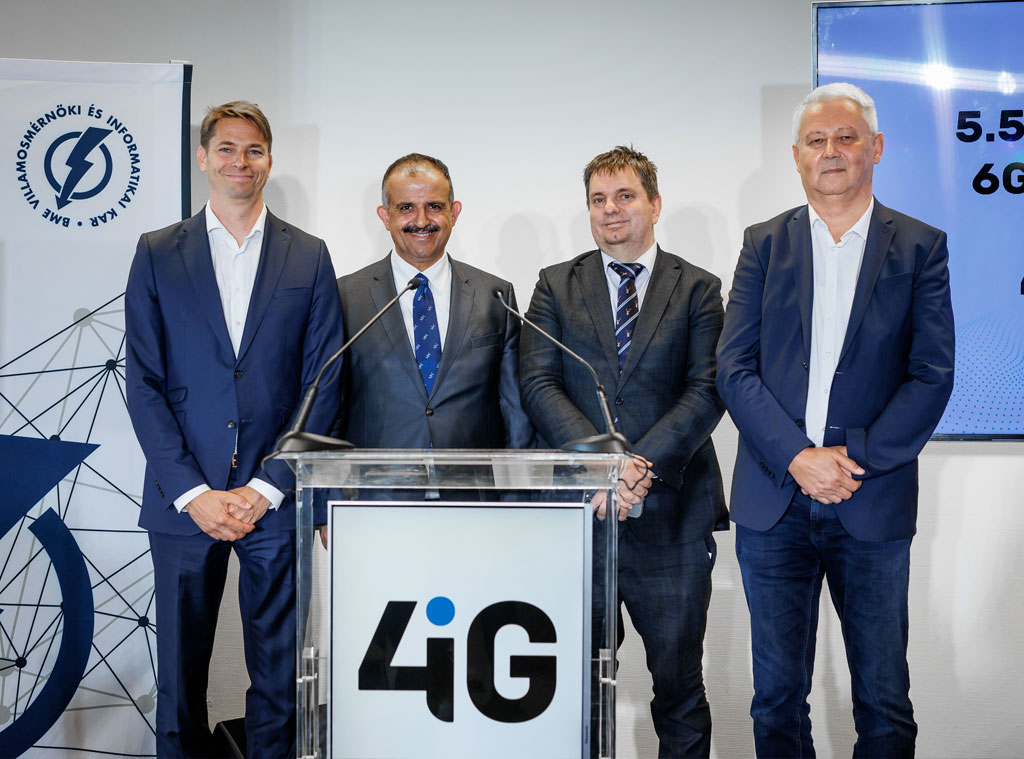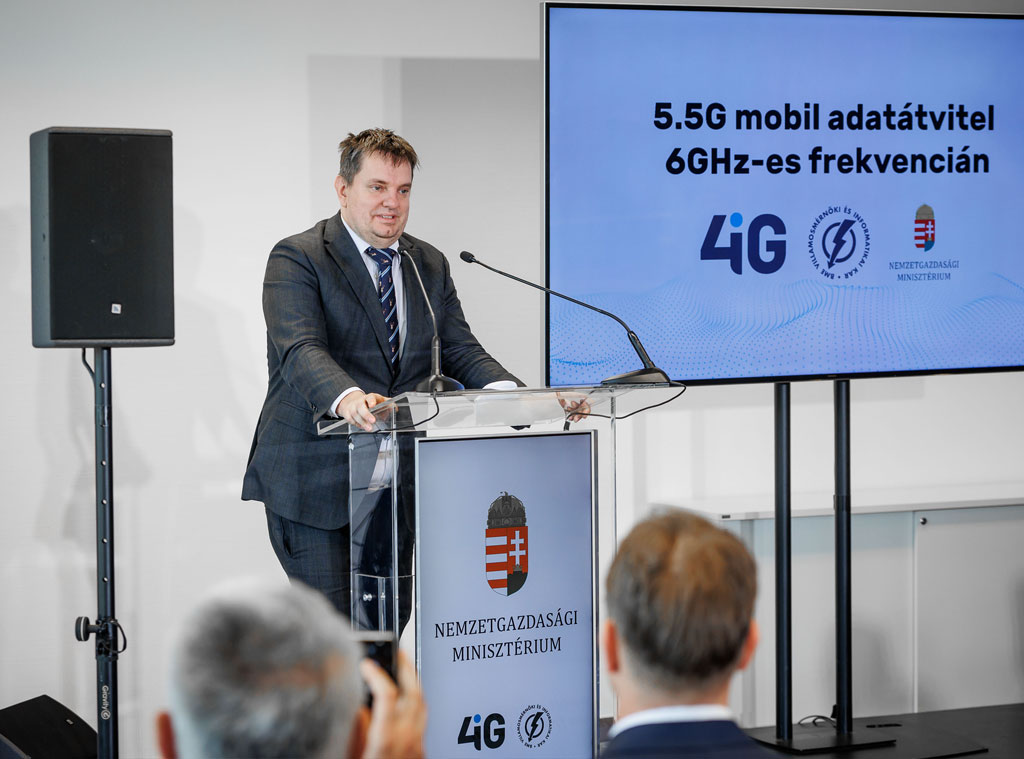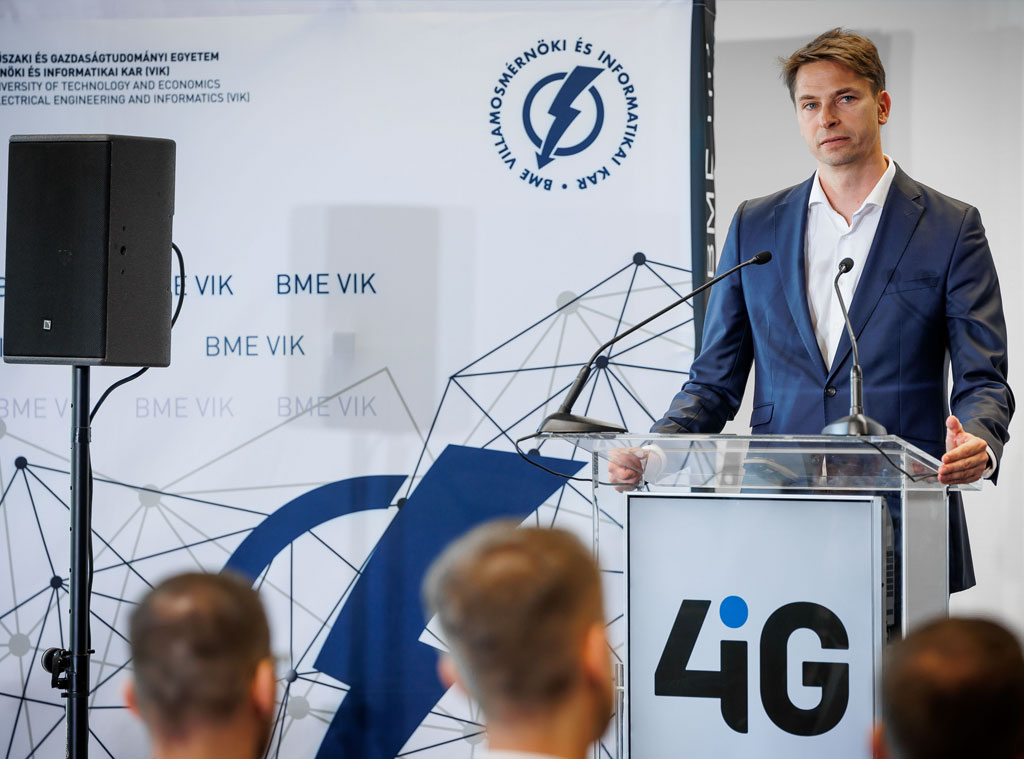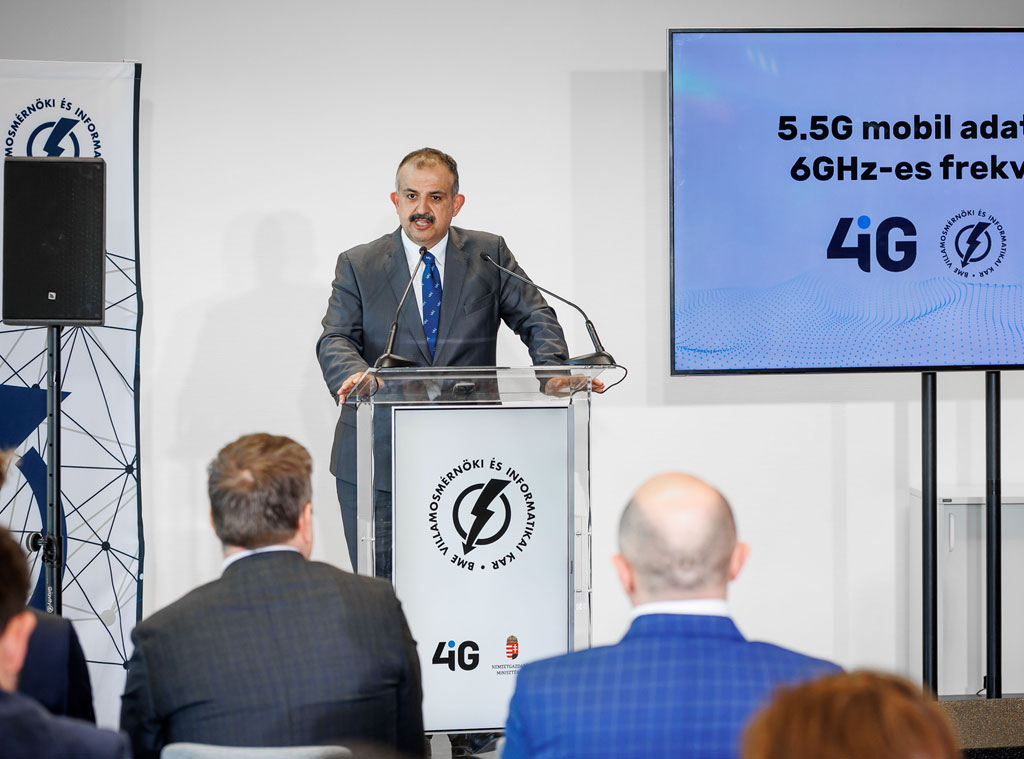PRESS RELEASE
4iG Group was the first to introduce 5.5G technology operating in the 6 GHz frequency band in the Central and Eastern European region
The Group is working with the Faculty of Electrical Engineering and Informatics at the Budapest University of Technology and Economics to research cutting-edge technology that could deliver download speeds up to ten times faster than 5G.

- 4iG Group was the first in Central and Eastern Europe to demonstrate 5.5G technology in operation using 6 GHz spectrum, which opens up new horizons in mobile network speeds and capacity.
- The new antenna technology, tested in collaboration with the Faculty of Electrical Engineering and Informatics of the Budapest University of Technology and Economics (in Hungarian: ‘BME VIK’), can deliver up to ten times faster download speeds than the fastest 3.5 GHz solution currently in use when built on existing base stations.
- At the end of last year, the International Telecommunication Union (ITU) approved the use of the 6 GHz frequency band for mobile services in Europe.
- 4iG Group is encouraging investment in the latest cutting-edge technologies also in telecommunications, a good example of which is the testing and demonstration of 6GHz mobile technology.
- The Group, through its subsidiaries in the Western Balkans, is also offering researchers from the Technical Universities of Tirana and Podgorica the opportunity to study the new technology.
“The digital economy now accounts for at least 25 per cent of total GDP, and the use of advanced technologies such as big data, artificial intelligence and 5G has become a key breakthrough for economies. The government aims to make Hungary one of the ten most digitally advanced countries in the EU by 2030, to become a centre of 5G development in Europe, and to be at the forefront of 5G development, adoption and practical application in the world. The government has therefore prepared a new Competitiveness Strategy for Hungary for the period 2024–2030, with the main goal of making Hungary a world leader in competitiveness by 2030. The key objectives of the strategy are to strengthen research and development and the links between universities, research centres and industry, as well as to promote the widespread use of innovative technologies, including 5G, by businesses” ”, said Gergely Fábián, State secretary for industrial policy and technology at the Ministry of National Economy, at a press conference to launch the technology.

The 6 GHz frequency band, combined with the new antenna technology presented, opens up new horizons for mobile operators, enabling them to achieve up to ten times the data speeds of current 3.5 GHz 5G technology by upgrading existing base stations. In laboratory measurements, a team of engineers from the 4iG Group and researchers from BME VIK recorded data rates in excess of 10 Gbps.
A key advantage of the new Extra Large Antenna Array (ELAA) technology is that the 6 GHz band can be used in existing sites and base stations to deliver a quantum leap in network capacity, equivalent to 3.5 GHz coverage, without the need for new base station sites – important for environmental and cost efficiency reasons. Thanks to the speed offered by 5.5G technology operating at 6 GHz, a wide range of 3D or even high-definition VR/AR applications could become widely available to consumers in the future. Enterprise application of the technology will bring the Internet of Things, Industry 4.0 solutions and cloud applications into a new era.
6 GHz mobile network technology is in the recently popular 'mid-band' frequency range and is capable of delivering gigabit data rates with high coverage. The equipment deployed at the Budapest University of Technology and Economics is primarily for research purposes to support the professional development of future network solutions and researchers. In addition, with the help of 4iG's subsidiaries in the Western Balkans, the trial period will provide researchers of the technical universities of Tirana and Podgorica the opportunity to experience and study the new technology.
“The testing of the cutting edge 6 GHz mobile technology is in line with 4iG Group's innovation plans and digitalisation goals" ", said Pál Zarándy, 4iG Group Mobile and 5G Strategy Director, at the launch. “The transition to 5G technology is an entry point into the telecommunications market for 4iG, which has a strong IT background, as it will enable the use of state-of-the-art data transmission solutions in addition to providing the backbone infrastructure. 4iG Group has brought the next level of mobile communications’ evolution to Hungary and Central and Eastern Europe, the cutting-edge 6 GHz 5.5G technology”, added Pál Zarándy.

4iG Group's innovative approach is demonstrated by the testing of 6 GHz technology, as the authorities only a few months ago, in December 2023, approved the use of the new frequency band for mobile networks. In 2022, the Group joined the Open Radio Access Network (O-RAN), a global industry alliance founded by leading telecommunications companies to make radio communications networks more open and efficient. The alliance provides an open platform for the development and operation of 5G-based radio network infrastructures, enabling 4iG to become a leader in the convergence of IT and telecommunications.
Dr Charaf Hassan, Dean of the Faculty of Electrical Engineering and Informatics at the Budapest University of Technology and Economics, said, “The 6 GHz technology we are demonstrating is an important step towards the goals set out earlier in the 5G vision. The new frequency band adopted by the ITU will contribute to the development of advanced 5G-based industrial applications, smart factories, and a connected economy. The 6 GHz radio data transmission system is only an experimental demonstration. However, the events at this year's Mobile World Congress (Barcelona) and the increased industry interest in the new technology indicate that 6 GHz could soon be deployed in mobile networks, making gigabit mobile internet a reality for users. BME VIK is ready to extend its existing 5G network with the new technology in order to participate in the development and innovation of 5.5G mobile applications. We congratulate 4iG Group for the demonstration and hope to continue our cooperation in this field with this flagship company of the Hungarian economy”.

Background information:
4iG Group
4iG Plc, a majority-owned Hungarian company based in Budapest, Hungary, is the leading telecommunications and IT group in Hungary and the Western Balkans, and one of the leading companies in the knowledge-based, digital economy. Listed on the Budapest Stock Exchange, the Group's fresh and innovative approach and its position as Hungary's leading IT systems integrator make it a leading business services provider in the region's digital transformation. 4iG's dynamic expansion strategy has made it a dominant player in the Hungarian and Western Balkan telecommunications markets. The Group is continuously expanding its services, expertise and portfolio to meet the changing needs and demands of the telecommunications and IT markets. The 4iG Group employs over 8,000 people.www.4iG.hu
For further information please contact:
4iG Plc
Péter Elkán
Group Corporate Affairs and
Communications Director
sajto (@) 4ig.hu
